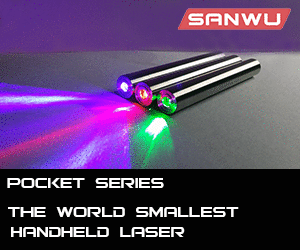
Welcome to Laser Pointer Forums - discuss green laser pointers, blue laser pointers, and all types of lasers
How to Register on LPF | LPF Donations
Navigation
Install the app
How to install the app on iOS
Follow along with the video below to see how to install our site as a web app on your home screen.
Note: This feature may not be available in some browsers.
More options

You are using an out of date browser. It may not display this or other websites correctly.
You should upgrade or use an alternative browser.
You should upgrade or use an alternative browser.
I'm looking for an answer about this
- Thread starter trueHOUSE
- Start date


- Joined
- May 24, 2007
- Messages
- 283
- Points
- 0
trueHOUSE said:This is a video of my dx50 turned into ir burner i want to know how much mw's do u think this laser is ?
no way of telling but probably 200 -300 mw
- Joined
- Aug 25, 2007
- Messages
- 2,007
- Points
- 63
There are several places for the energy to go. One of the simplest places its lost is to reflections. To get out of the the laser housing, the light has to leave the IR diode, passing into and then out of a lens, enters and then leave 2 more crystals, and then enters and leaves whatever collimating lens you're using. That's 8 interfaces, double the number of interfaces it has to pass through compared to using just a diode (4 times the number with an open-can), so that's double (or 4 times for an open-can) the losses of what you'd get with just a diode. This is because some light is always reflected when passing through an interface. So that is one source of losses, but that's not the major one.
Another answer to where energy goes is basically what you said, heat. Photons can't just be converted to another wavelength without any energy change, because different wavelength photons have different energies. In fact, a 532nm(green) photon has more energy than a 808nm(IR) photon. These energy conversions between photons and electron transitions in the crystals are not completely efficient, and energy is lost through these transitions and through electron and atom vibrations caused by the photons passing by. An atomic vibration, also known as a phonon, is exactly heat.
So basically, it's just inefficiencies, which either don't let the light through or turn their energy into heat in the crystals. Some higher-powered lasers do let IR through, which is why you need a filter to make sure there's no IR leaking through. The filter will simply absorb the photons and the energy will be dissipated into heat.
Another answer to where energy goes is basically what you said, heat. Photons can't just be converted to another wavelength without any energy change, because different wavelength photons have different energies. In fact, a 532nm(green) photon has more energy than a 808nm(IR) photon. These energy conversions between photons and electron transitions in the crystals are not completely efficient, and energy is lost through these transitions and through electron and atom vibrations caused by the photons passing by. An atomic vibration, also known as a phonon, is exactly heat.
So basically, it's just inefficiencies, which either don't let the light through or turn their energy into heat in the crystals. Some higher-powered lasers do let IR through, which is why you need a filter to make sure there's no IR leaking through. The filter will simply absorb the photons and the energy will be dissipated into heat.
something is not ok with these lasers. When i put a lens in front of the IR diode it burns like hell but when i screw the focusing part it cant light a match or even cant burn trash bags do is this normall the ir light is going somewhere but not in the collimating lens thats in the focusing part
trueHOUSE said:something is not ok with these lasers. When i put a lens in front of the IR diode it burns like hell but when i screw the focusing part it cant light a match or even cant burn trash bags do is this normall the ir light is going somewhere but not in the collimating lens thats in the focusing part
well maybe the cheaper crystals "absorb" some power and thats why you cant burn stuff.
in my case, i cant pop a balloon with a dx 30, but idk what u can do with ur modded dx 50

